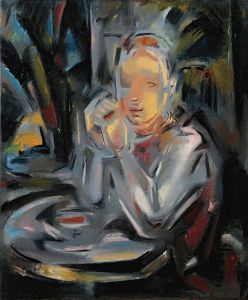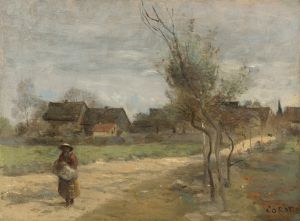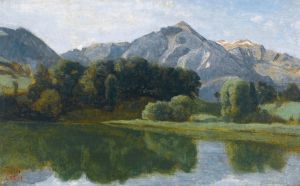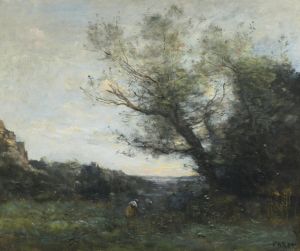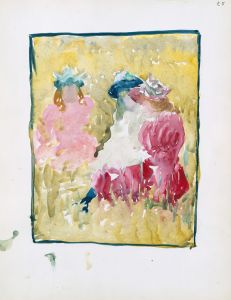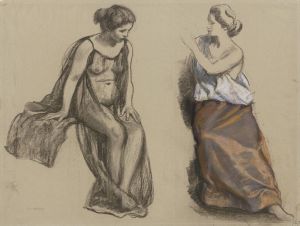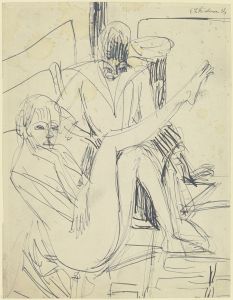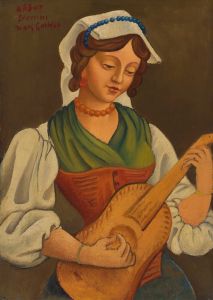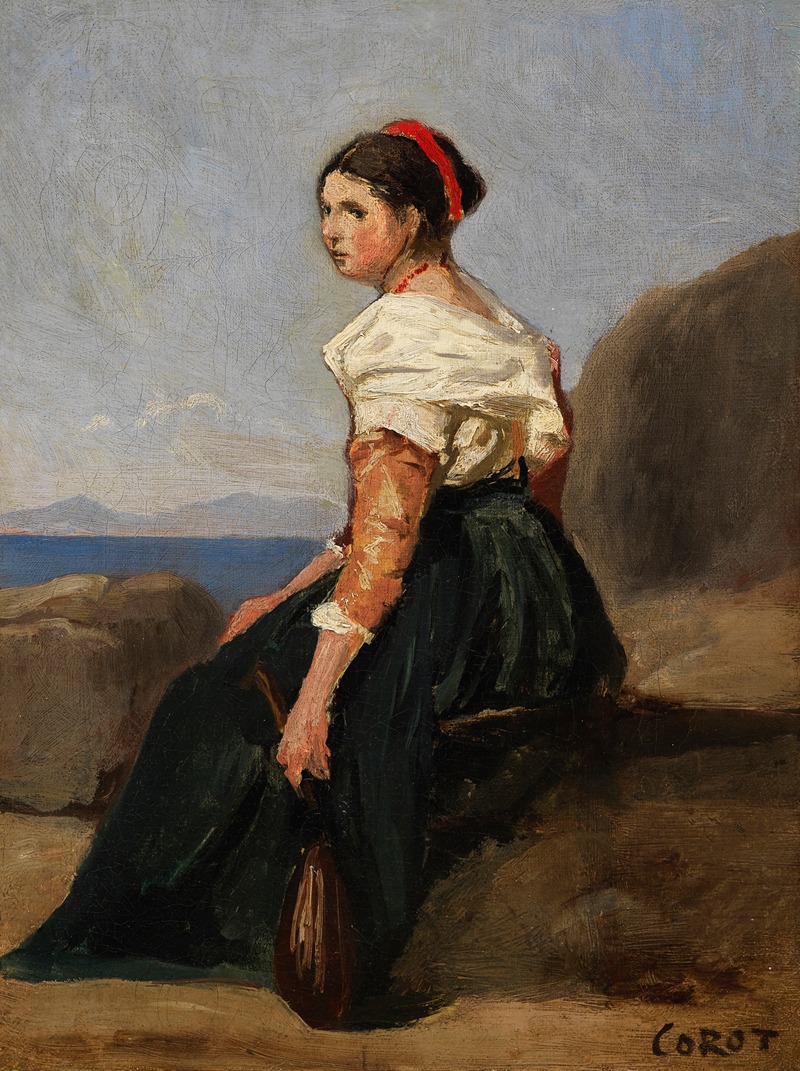
Femme assise, tenant une mandoline
A hand-painted replica of Jean-Baptiste-Camille Corot’s masterpiece Femme assise, tenant une mandoline, meticulously crafted by professional artists to capture the true essence of the original. Each piece is created with museum-quality canvas and rare mineral pigments, carefully painted by experienced artists with delicate brushstrokes and rich, layered colors to perfectly recreate the texture of the original artwork. Unlike machine-printed reproductions, this hand-painted version brings the painting to life, infused with the artist’s emotions and skill in every stroke. Whether for personal collection or home decoration, it instantly elevates the artistic atmosphere of any space.
Jean-Baptiste-Camille Corot, a pivotal figure in 19th-century French painting, is renowned for his contributions to landscape painting and his role as a precursor to the Impressionist movement. Among his diverse body of work is the painting "Femme assise, tenant une mandoline" (Seated Woman Holding a Mandolin). This artwork exemplifies Corot's ability to blend portraiture with his characteristic atmospheric style.
Corot was born in Paris in 1796 and began his artistic career relatively late, after working in the family textile business. He studied under Achille-Etna Michallon and Jean-Victor Bertin, both of whom were proponents of the neoclassical landscape tradition. Corot's early works were heavily influenced by his travels to Italy, where he was inspired by the Italian countryside and the works of the Old Masters. Over time, his style evolved to incorporate a more naturalistic approach, characterized by soft brushwork and a focus on light and atmosphere.
"Femme assise, tenant une mandoline" is a testament to Corot's interest in capturing the serene and contemplative aspects of his subjects. The painting depicts a woman seated, holding a mandolin, a stringed musical instrument that was popular in European music during the 18th and 19th centuries. The subject's pose and expression convey a sense of introspection and tranquility, which is enhanced by Corot's subtle use of color and light.
Corot's portraits, though less numerous than his landscapes, reveal his sensitivity to the human form and emotion. In "Femme assise, tenant une mandoline," he employs a muted palette, with gentle transitions between light and shadow, to create a harmonious composition. The background is typically understated, allowing the viewer to focus on the figure and her contemplative demeanor. This approach is consistent with Corot's broader artistic philosophy, which emphasized simplicity and the evocation of mood over detailed realism.
Throughout his career, Corot maintained a balance between his landscape and figure paintings. While he is primarily celebrated for his landscapes, his portraits and figure studies, such as "Femme assise, tenant une mandoline," demonstrate his versatility and depth as an artist. These works often feature solitary figures in quiet, introspective poses, reflecting Corot's interest in capturing the inner life of his subjects.
Corot's influence on subsequent generations of artists cannot be overstated. His innovative approach to light and atmosphere paved the way for the Impressionists, who admired his ability to convey the transient effects of nature and mood. Artists such as Claude Monet and Camille Pissarro regarded Corot as a mentor and a source of inspiration.
"Femme assise, tenant une mandoline" is a fine example of Corot's mature style, where his mastery of form, light, and composition come together to create a work that is both intimate and timeless. The painting reflects Corot's enduring fascination with the interplay between the human figure and its surroundings, a theme that resonates throughout his oeuvre.
In summary, Jean-Baptiste-Camille Corot's "Femme assise, tenant une mandoline" is a significant work that highlights the artist's skill in portraiture and his ability to evoke a sense of calm and introspection. Through his nuanced use of color and light, Corot captures the essence of his subject, making this painting a noteworthy example of his contribution to 19th-century art.





